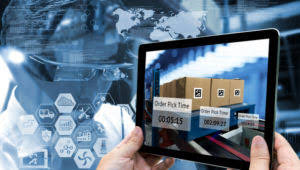Expenses in Accounting Definition, Types, and Examples

For example, if a business pays rent for April on May 1st, it would record the rent expense in May. This method is simple and easy to understand, but it types of expenses in accounting may need to accurately reflect the financial position and performance. The price incurred in purchasing raw materials and producing finished goods is known as the cost of goods sold (COGS). It excludes expenses incurred by the entire company for selling and administration, as well as interest charges and losses on unusual goods.
- One of the most reviewed accounts in accounting is the expense account.
- The method is most commonly used in industries that produce pharmaceuticals, textiles and electrical manufactured goods.
- An expense account records and tracks the operational costs incurred by a company.
- However, if expenses are cut too much it could also have a detrimental effect.
- Expense accounting also involves the preparation of financial statements that report the company’s overall financial health, including the income statement and balance sheet.
- It can help business owners make informed decisions, and can lead to better budgeting overall.
- On the other hand, owing to flexibility, variable expenses can be reduced based on performance, which helps in the management of business profitability.
Cost of Contract
Operating expenses are those expenses that are incurred while selling goods and services. It also includes advertising costs, your shop’s rent and salaries of your salespeople. Tracking and recording expenses in accounting may feel daunting at first, but with the right approach, it can become a straightforward process.
- Fixed costs are those costs that do not change with the level of business activity or the volume of production.
- Uniform cost considers the adoption of uniform costing in the various organisations in the industry.
- If you’re looking to get more organized with your books, it’s time to start getting involved with your expense accounts.
- For example, you may use office space in December but only pay for it in January.
- You should also consider listing office furniture here, as some of it may be tax-deductible depending on the cost.
- All of our content is based on objective analysis, and the opinions are our own.
To Ensure One Vote Per Person, Please Include the Following Info
For instance, maybe you don’t have an accountant on staff but need one short-term or for a special project. Or you need to hire an outside agency to provide the content for your company blog. The payments of these fees would be categorized under “Professional Services”. Business supplies are tangible items like pens, paper, staplers, printer ink, and postage.
How much will you need each month during retirement?

However, when considering expenses for the double-entry bookkeeping system, expenses are just one of the five-main groups where all your financial transactions are recorded. The other four categories are revenue, owner’s equity, assets, and liabilities. Expenses in the double-entry bookkeeping system are recorded as a debit to a specific expense account. Simultaneously, the same amount’s credit entry also needs to be recorded, which will reduce your assets and increase your liabilities.

How much are you saving for retirement each month?

However, there are situations where small business owners can write off start-up costs as a deductible expense. As long as the business had total start-up and organizational costs of $50,000 or less, it can deduct up to $5,000 in start-up and organizational costs in the first year the business operates. However, you can claim the interest you’ve paid if you take out a loan or accrue credit card charges to finance business expenses. As a small business owner, you can categorize your expenses for a small business.

Company
- Additionally, it will also give you valuable insights on where you can minimize your expenses and save your budget when you need to do so.
- Industries that commonly use this method include automobile manufacturing, aircraft production and electronics.
- They are expenses related to borrowing money from creditors or lenders.
- The International Financial Reporting Standards (IFRS) also guide capitalizing software licenses.
- For companies, opportunity costs do not show up in the financial statements but are useful in planning by management.
Using it helps companies to streamline their expense management processes, reduce errors, and improve overall financial efficiency. This means that expenses are recognized when incurred, regardless of when the payment is made. Under accrual accounting, expenses are recognized when incurred, regardless of when the payment is made. This means an expense is recorded when the business receives goods or services or is obligated to pay for them. Effective expense accounting practices help businesses to maintain accurate financial records, monitor expenses, and make sound financial decisions to achieve their goals.
While people might track their spending for budgeting, businesses and accountants have Online Accounting clear rules about what counts as an expense. Expense accounts are often looked at under a magnifying glass by business owners. However, you need to remember that some expenses are absolutely necessary. As such, you don’t want to cut expenses for the sake of saving money.
The costs include direct material, labor, sub-contract and special types of overhead costs. Such fields are construction, infrastructure, shipbuilding and engineering. One variety of job costing is batch costing whereby products are always produced in large batches rather than as a virtual accountant singular unit. Using the total batch cost and number of units to determine the actual cost per unit, the cost is made up of both direct cost and indirect that are assigned toward the batch itself. This costing variant is utilised in sectors such as pharmaceuticals, textiles, electronics and toys.

Leave a comment